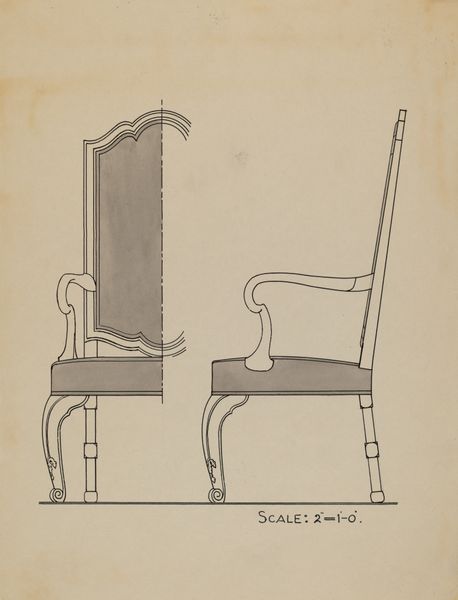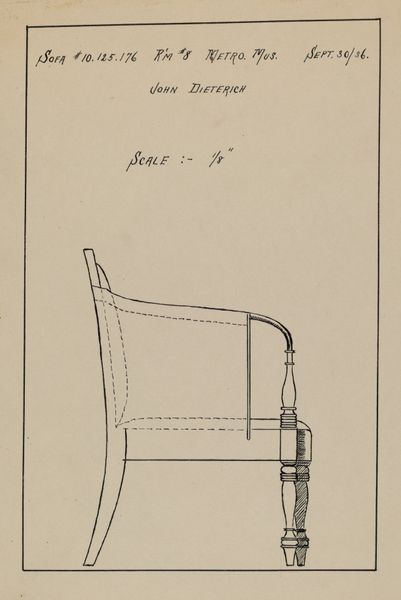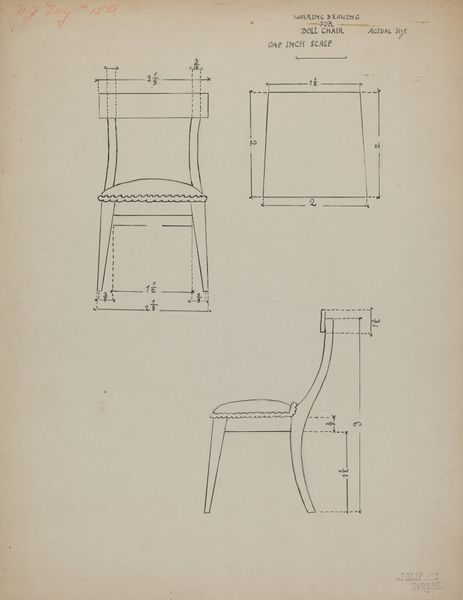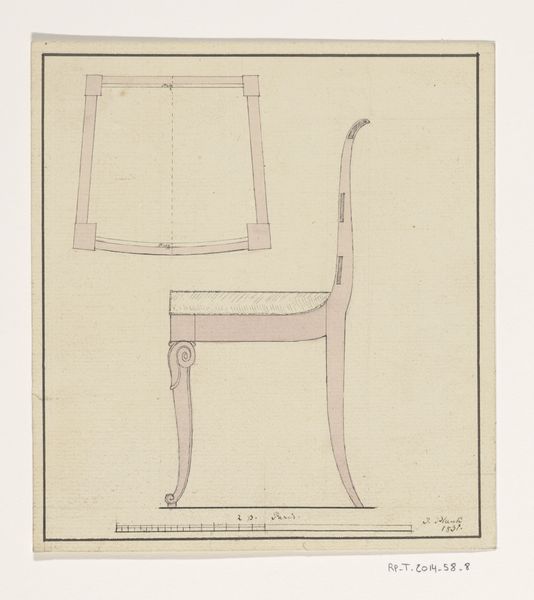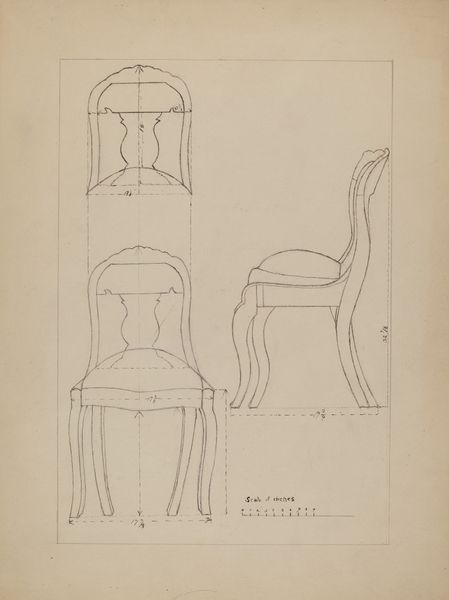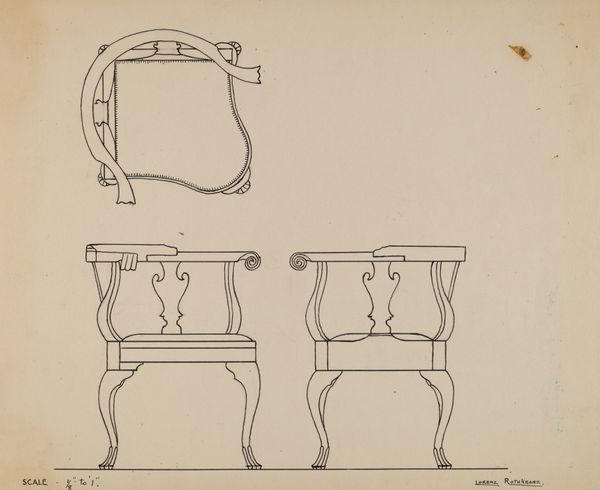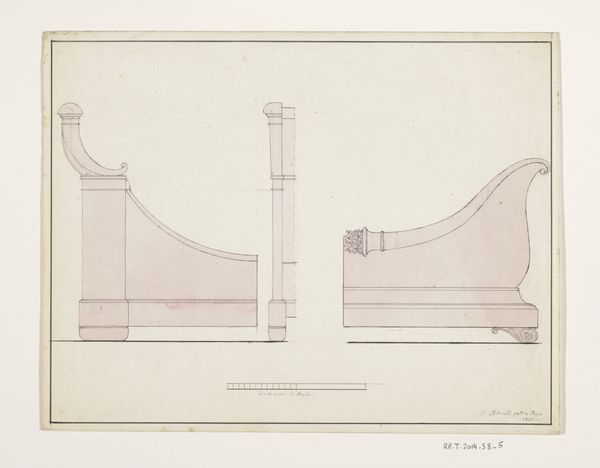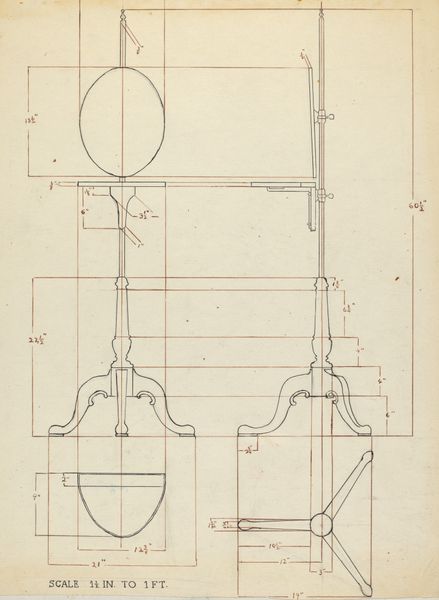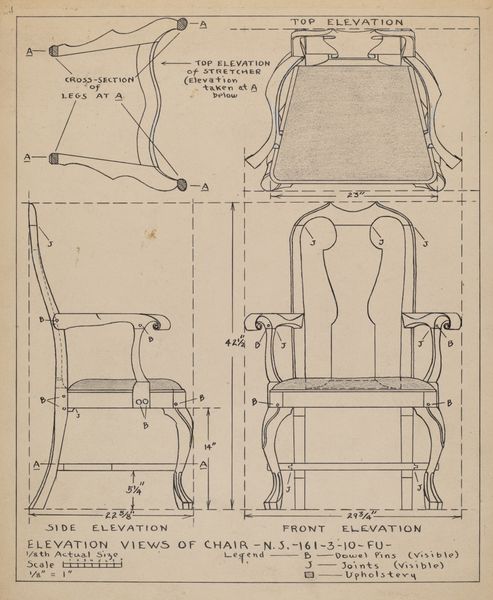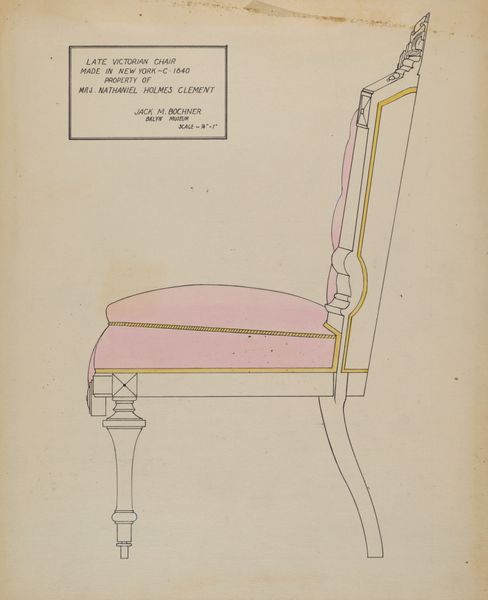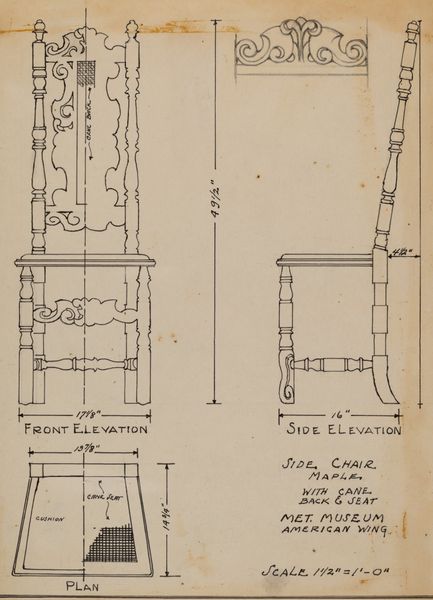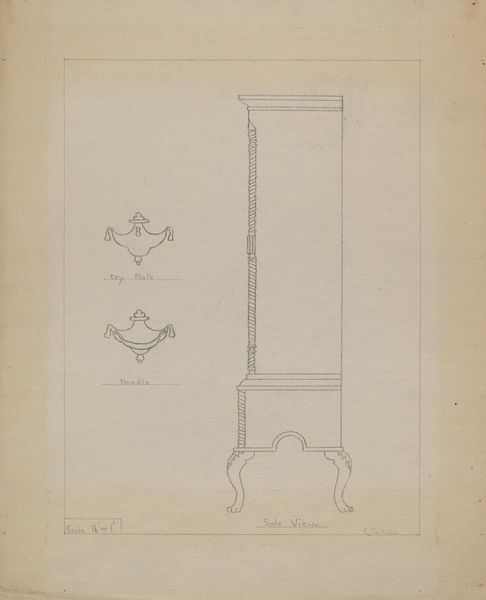
drawing, pencil
#
drawing
#
geometric
#
pencil
#
realism
Dimensions: overall: 25.4 x 19.3 cm (10 x 7 5/8 in.) Original IAD Object: none given
Copyright: National Gallery of Art: CC0 1.0
Curator: What a fascinating drawing. This is a plan for a "Walnut Armchair," rendered around 1936. Editor: It strikes me immediately as both precise and strangely evocative. There's a crispness in the lines, but the cabriole legs give it a kind of playful energy. You can almost feel the maker’s hands at work, even in this two-dimensional form. Curator: Absolutely. This drawing exists in an interesting space – somewhere between technical document and artistic representation. The chair was created by Simon Weiss who seems to be particularly good at capturing realistic representation using the technique of pencil drawing. Editor: The geometric accuracy is compelling, but I find myself thinking about the walnut itself – the weight, the texture. And of course the labor! Someone had to carefully select the wood, carve it with these shapes, assemble all components together… This drawing flattens that whole process, doesn’t it? Curator: It does. The drawing, as a historical document, hints at the cultural status such an armchair might have occupied. Was it intended for domestic comfort or display? How might its aesthetic tie into design movements of the time, or the specific tastes of its commissioner? It represents the socio-economic forces during that period. Editor: Exactly, and the making reveals it too! These are not the streamlined forms you might expect from that era. The drawing itself uses techniques that were taught and widespread, and those lines represent both artistic skill and a set of historical relations around skill, and the process for constructing things back then! It offers a perspective to explore these social issues. Curator: Indeed, it invites a more probing look at these objects. The scale denoted beneath, along with this two-perspective view and the intricate embellishments on the legs. It presents so many angles through which one may contemplate what design and material life looked like. Editor: The armchair plan gives insight into craft practices, the artist's design process, and the hidden labor and materials necessary to produce a domestic object. The social and environmental are tied. Curator: Thank you for reminding me to reconsider design history through a material lens. Editor: And thank you for highlighting that the design choices of what was "popular" at the time still needed humans doing skilled work!
Comments
No comments
Be the first to comment and join the conversation on the ultimate creative platform.
